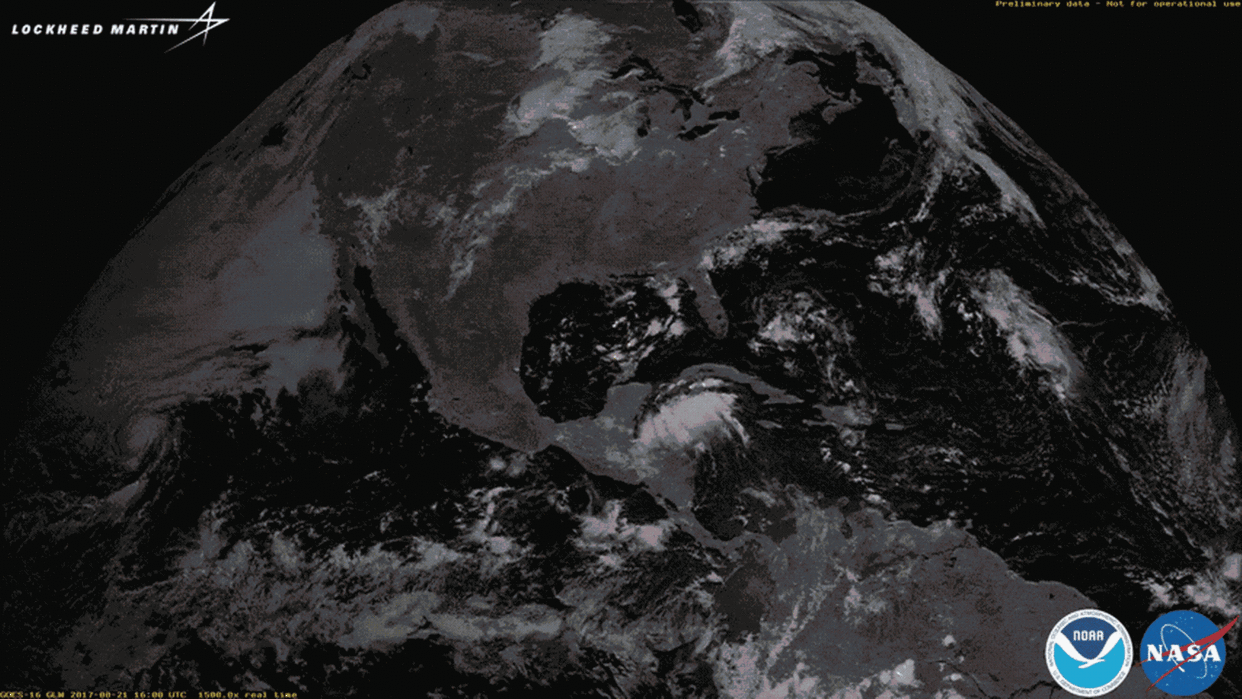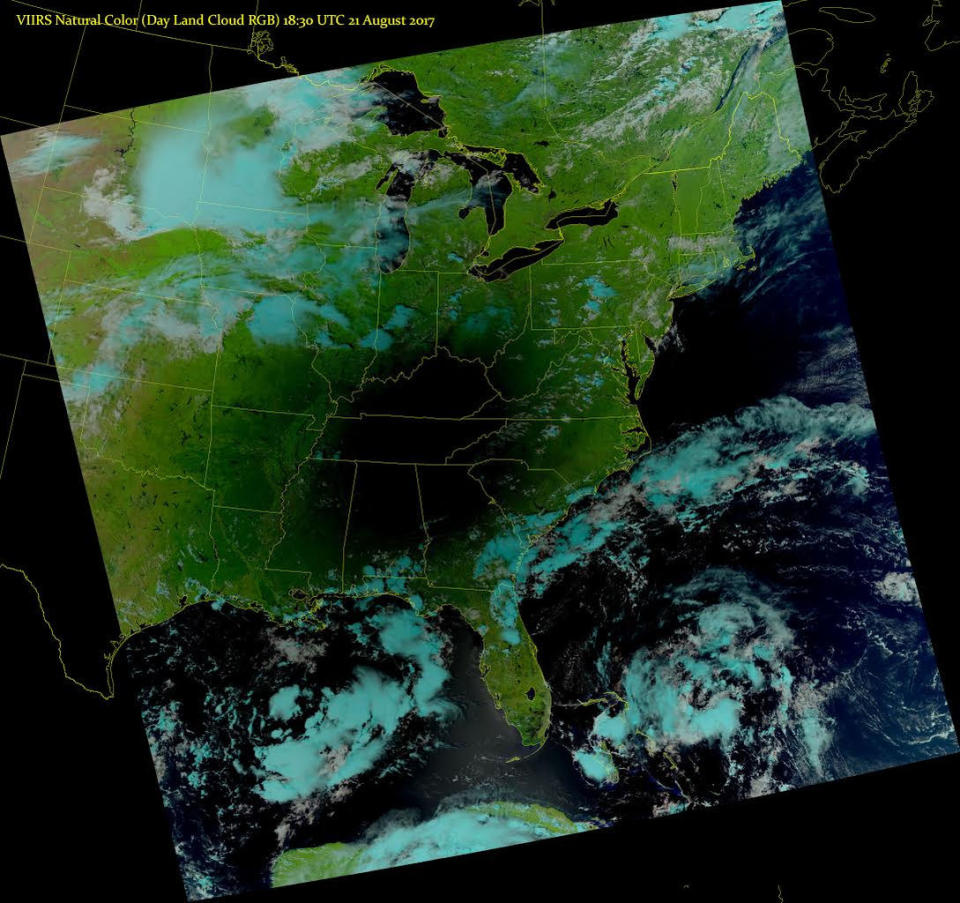Dazzling Lightning Flashes Captured in Solar Eclipse's Shadow

What does an eclipse's path look like from space? Satellite cameras captured spectacular views of the Great American Solar Eclipse's shadow sweeping across the U.S. from coast to coast, including a sequence showing infrared images of the eclipse path punctuated by flashes of lighting from storms.
A lightning-tracking instrument called the Geostationary Lightning Mapper (GLM) — attached to a weather satellite operated by the National Oceanic and Atmospheric Administration (NOAA) — caught the lightning in action in the upper Midwest region of the U.S. while the eclipse was underway.
As the shadow of the eclipse traveled east, cloud-to-ground lighting strikes created a flashbulb effect amid the darkness of the moon's shadow. [Photos: 2017 Great American Solar Eclipse]
The lightning mapper — the first instrument of its kind in geostationary orbit — observes lightning that occurs around the clock within clouds, and between clouds and the ground. It is installed on the Geostationary Operational Environmental Satellite-R (GOES-16), which collects images and atmospheric data, and monitors space weather, according to NOAA's mission description.
By monitoring changes in lightning strength and frequency, GLM and other forecasting tools can help scientists better predict severe storms as they develop, NOAA reported.
Another dramatic mid-eclipse view from space is a so-called "natural color" image that combines infrared with enhanced colors, and was captured by the Visible Infrared Imaging Radiometer Suite (VIIRS) carried by the NOAA/NASA Suomi NPP satellite. The moon's shadow appears as a dark blot surrounded by green vegetation and blue ice clouds, according to NOAA. The black spot covers several states in the southeastern U.S., and the image was taken at 2:30 p.m. ET.

Millions of people gathered within that fast-moving shadow on Aug. 21 as the eclipse bisected the U.S., and many are already anticipating the next eclipse to travel cross-country. Though coast-to-coast eclipses typically happen only once every 375 years, people living in the contiguous U.S. will be lucky enough to catch the next one much sooner — on April 8, 2024, climbing northward from Mexico up through New England.
Original article on Live Science.


